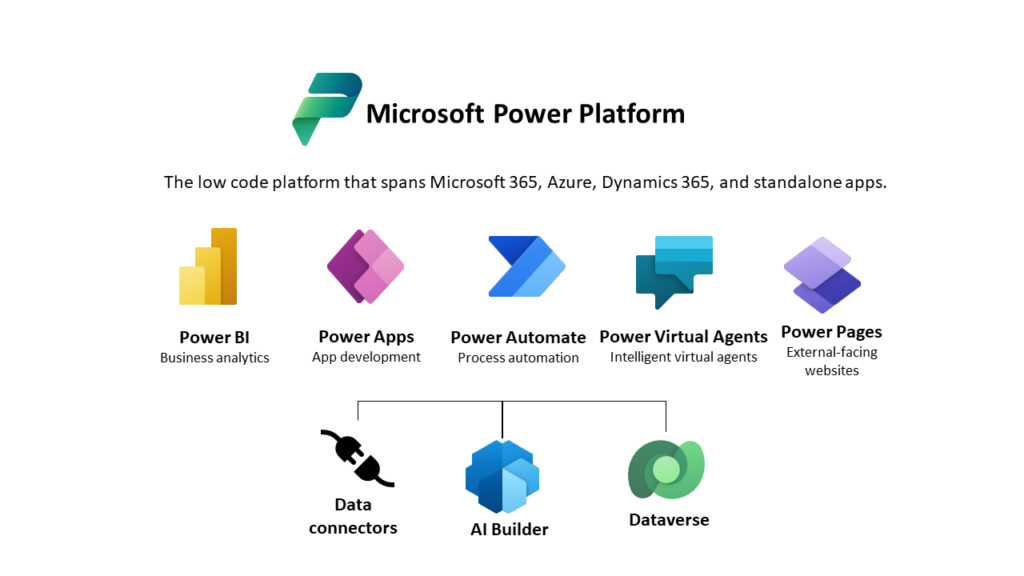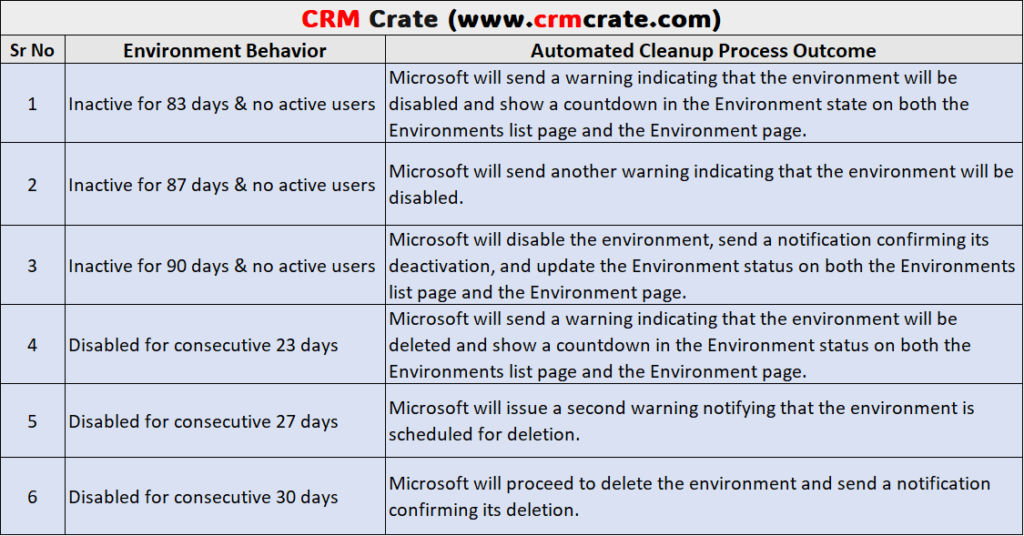In this blogpost, we will learn the automatic environment cleanup process in the Power Platform. Before we begin, ensure that you subscribe to CRM Crate to stay updated in the field of Power Platform.

The Power Platform environment is like a digital playground where you can create, manage, customize and run various business applications without needing hardcore coding skills. It’s a suite of tools provided by Microsoft that includes Power BI, Power Apps, Power Automate, and Copilot Studio.
Each environment within a Microsoft Entra tenant is exclusively accessible to users within that tenant. Additionally, every environment is tied to a specific geographic region, such as the United States. When you develop an app within an environment, it is directed straightly to data centers situated in that particular geographic region. Moreover, any components generated within that environment, including virtual copilot chat bots, connections, gateways, and workflows using Microsoft Power Automate, are similarly associated with the location of their respective environment.
Each environment can either have no or one Microsoft Dataverse database, which serves as storage for your applications and chatbots. Whether you’re able to create a database for your environment depends on the license you’ve acquired for Power Apps and your permissions within that specific environment.
Understanding automatic environment cleanup process in Power Platform
Automated processes are regularly carried out to spot and remove inactive Power Platform environments in order to optimize storage space. An environment might face deletion due to being in a tenant with an expired subscription or simply due to lack of usage. In either scenario, there are steps you can take to safeguard the environment from removal.

Automatic deletion of environments with expired subscription
When a tenant’s subscription expires or is deprovisioned, all the environments within that tenant are flagged for deactivation and eventual deletion from tenant. When an environment is flagged for cleanup, the system sends email notifications to all administrators within your organization 14 days, 7 days, and 1 day before the environment is disabled. If no action is taken, the environment will be deleted 10 days after the last email notification is sent.
It is important to note that you need to renew and purchase new license before the automated cleanup process deletes your environment. If your environment gets automatically deleted, you have the option to recover it within 7 days of deletion. You can do this through the Microsoft Power Platform admin center or by utilizing the Power Apps cmdlet ‘Recover-AdminPowerAppEnvironment‘. For production environments with Dynamics 365 applications, they will remain available for recovery for up to 28 days.
Automatic deletion of environments which are not used anymore
The Power Platform includes a cleanup feature that automatically eliminates environments not in use. If an environment remains inactive for 90 days, it is disabled. After an additional 30 days, if no action is taken, the disabled environment is permanently deleted. However, you do have a seven-day window to recover deleted environments. The automatic cleanup based on activity only impacts developer and Dataverse for Teams environments.
The below shown tabular image demonstrates automatic environment cleanup process behavior according to inactivity timeline.






